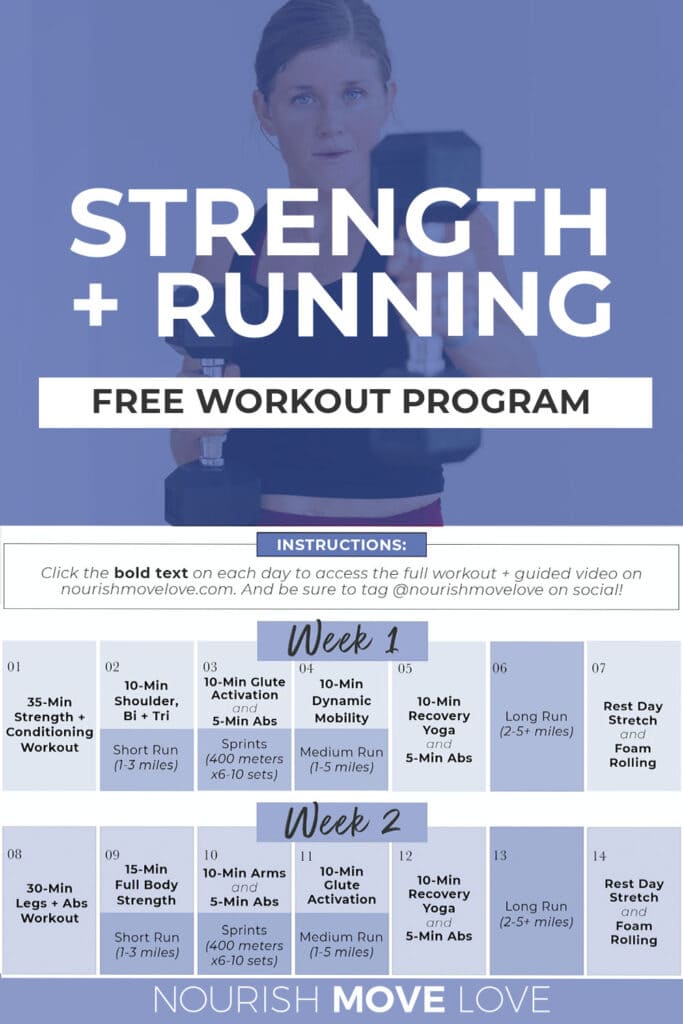Control Your Runs: Proven Strategies for Effective Running Workout
Control Your Runs: Proven Strategies for Effective Running Workout
Blog Article
The Ultimate Overview to Taking Care Of Discomfort When Running
Whether you are a skilled marathoner or just beginning your running trip, understanding the various types of pain that can develop and the strategies to resolve them is crucial. From pre-run warm-up regimens to proper footwear choice, there are countless aspects to take into consideration when it comes to dealing with discomfort while running.

Understanding Various Types of Running Discomfort
When running, it is vital to compare various sorts of pain to avoid injuries and make best use of efficiency (Read More). One common sort of pain that runners might experience is muscle mass discomfort, which normally emerges from the anxiety put on muscles during workout. This kind of pain is commonly a regular component of the running procedure and can be managed with appropriate warm-up, cool-down, and extending regimens
One more kind of pain to be aware of is joint pain. Joint discomfort can suggest issues such as overuse, inappropriate type, or underlying conditions like joint inflammation. Overlooking joint discomfort can bring about more serious injuries, so it is vital to attend to any kind of pain without delay and potentially look for professional advice.
Additionally, sharp or stabbing discomforts need to not be ignored. These kinds of discomfort can signify intense injuries such as pressures, strains, or stress cracks - running workout. Remaining to run through these kinds of pain can intensify the injury and extend recuperation time

Pre-Run Workout and Extending Routine
To prepare the body for a running session, implementing an efficient pre-run warm-up and extending routine is essential. A proper warm-up helps enhance blood circulation to the muscles, improves versatility, and lowers the threat of injury during the run. Start with dynamic stretches like leg swings, arm circles, and high knees to slowly elevate your heart price and loosen up the muscle mass. Dynamic extending aids imitate the movements you'll be doing while running, preparing your body for the activity ahead. Follow this with fixed stretches focusing on significant muscular tissue teams such as the hamstrings, quadriceps, calf bones, and glutes. Hold each go for regarding 15-30 seconds without jumping to advertise muscle mass leisure and flexibility. Bear in mind to listen Resources to your body and change the strength of your warm-up based upon your health and fitness level and any pre-existing problems. By including a consistent pre-run workout and stretching routine right into your running program, you can enhance performance and decrease the threat of discomfort or injury.
Proper Footwear Selection and Fit
When selecting running shoes, it is vital to consider aspects such as foot kind, running stride, arch support, cushioning, and footwear dimension. Visiting a specialized running shop for a gait analysis and specialist installation can assist guarantee that you choose the right shoes for your individual needs. Spending in high-quality shoes that is proper for your running design and foot anatomy is an aggressive step in the direction of avoiding discomfort and injuries throughout your runs.
Nutrition and Hydration Tips for Pain Avoidance

Hydration is just as vital for runners to stay clear of aches, dehydration, and other discomforts that can lead to pain throughout running. By focusing on nutrition and hydration, runners can improve their performance, minimize discomfort, and appreciate a more comfy running experience.
Post-Run Recuperation Techniques to Alleviate Pain
Executing effective recuperation strategies is essential for minimizing pain and promoting muscular tissue healing after running sessions. One key post-run recovery technique is extending. Including fixed go for major muscular tissue groups can help in reducing muscle tension and pain. Foam rolling is another beneficial technique to release muscular tissue rigidity and improve blood flow to the muscular tissues, assisting in quicker recovery. In addition, icing sore locations for 15-20 minutes can help in reducing inflammation and numb discomfort post-run.
Moistening sufficiently post-run is important for renewing liquids lost throughout workout and assisting in muscle recuperation. Consuming a balanced treat or meal that includes healthy protein and carbs within half an hour of ending up a run can assist fix muscle cells and restore energy shops. Furthermore, getting adequate remainder is crucial for allowing the body to repair and strengthen muscle mass. Incorporating active recuperation activities such as light strolling or swimming can additionally aid promote blood circulation and decrease muscle rigidity - Read More. By incorporating these post-run healing techniques right into your regimen, you can successfully handle discomfort and maximize your running efficiency.
Final Thought
To conclude, addressing different sorts of running discomfort via proper workout, extending, footwear selection, nutrition, hydration, and post-run recovery strategies is essential for pain prevention and monitoring. By recognizing the root causes of discomfort and implementing these strategies, runners can decrease pain and possible injuries. It is vital to focus on general physical health and wellness and wellness to guarantee an effective and delightful running experience.
Report this page